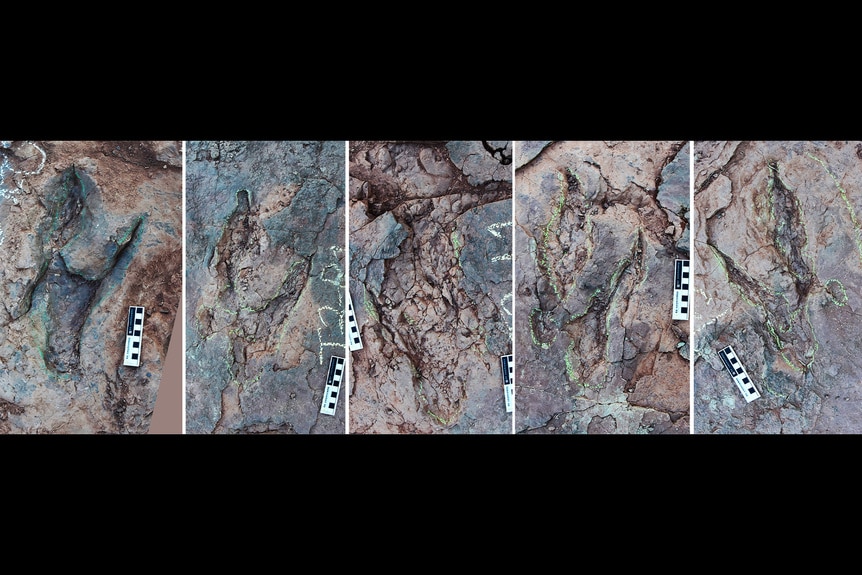Create a free profile to get unlimited access to exclusive videos, sweepstakes, and more!
Largest Raptor Tracks Ever Found Hint at Monster-Sized Species
These dinosaurs would have given the Jurassic Park raptors a run for their money.
Velociraptors were mid-sized prehistoric predators about the size of a modern turkey, but that’s pretty far from their popular image. By the time their tiny fossil bones traveled through Michael Crichton’s novelized reimagining and Steven Spielberg’s on-screen adaptation (streaming now on Peacock), they had transformed into much larger and more terrifying creatures.
Crichton favored velociraptors because their name conjures fear in a way other species names don’t, though he based their characteristics almost exclusively on their larger relative, Deinonychus. In the decades since Jurassic Park hit theaters, Crichton’s fictional inventions have been vindicated by the discovery of large raptor species in the real world which rival the size of their imagined counterparts.
Now, a group of paleontologists have uncovered the largest raptor footprints ever found, hinting at the existence of a previously unknown large raptor species. The discovery was published in the journal iScience.
For More on Raptors:
Reconstructing the Voices of Dinosaurs: The Science Behind Jurassic Park III
How Smart Were Rexy and her Tyrannosaur Friends? Scientists Disagree
Meet the Hell Chickens, A Newly Discovered Species of Birdlike Dinosaur
New Raptor Species Revealed by the Largest Raptor Tracks Ever Found
In 2020, paleontologists found a large deposit of fossilized footprints at what is now known as the Longxiang site. Today, Longxiang is a large, rocky geological formation, but 90 million years ago it was home to a river surrounded by muddy banks, perfect for capturing the footprints of large animals.
Among more than 240 preserved prints scattered across 17,000 square feet, scientists found 12 raptor prints of two different kinds. Researchers knew they were raptors because of the distinctive two-toed tracks. Raptors have three forward-facing toes but they kept one of them raised, its recurved killer claw always ready for the attack. Keeping it lifted prevented it from being dulled by scraping along the ground.
Of the raptor tracks, six were small, only about 4.3 inches (11 centimeters) long. They likely belonged to Velociraptorichnus, a small genus of raptor known only from footprints. They are estimated to have been about 5 feet long and weighed just 10 pounds. The other six prints were much larger, approximately 14 inches (36 centimeters) in length.
The new species, known only from their especially large tracks, has been dubbed Fujianipus yingliangi. Based on the toe proportions, paleontologists believe they were a member of troodontidae, a group within maniraptora. Based on the size of the tracks, Fujianipus yingliangi was likely 16 feet long and stood 6 feet tall at the hip. With only footprints to go on, we don’t know much about the beasties, but their size suggests they were adapted for hunting large prey.
While their large stature makes them perfect movie monsters, Fujianipus yingliangi was an outlier in the raptor group. Raptors experimented with large bodies, but most species favored small or medium sizes, leaving the large predator niche to the up-and-coming tyrannosaurs.
Catch the entire Jurassic Park trilogy streaming now on Peacock.
































